Mabukuwene
About the Site:
Mabukuwene means ‘the look-out‘ or ‘high point’. The view point is built upon a rocky outcrop 1 422 m above sea level, and provides a 360 º view of the Bulawayo area from the open-sided thatched rondavel.
The property is situated a few kilometres south of Bulawayo City-centre and consists of 12 hectares of indigenous trees and plants set in an unspoilt area of kopjes whose distinctive pink hue distinguishes it from other rocky environments in and around Bulawayo.
There are some 80 different species of indigenous trees including some particularly fine specimens of Ficus and Euphorbia with many aloes and other succulents. When in flower they attract a wide variety of birds, nearly 100 species of which have been recorded.
The property has a long social heritage that extends back from at latest 250,000 years to the early colonial era. This history is represented as archaeological sites, rock paintings, old village remains, graves and various stone and brick-built structures.
In July 2017 National Museums & Monuments of Zimbabwe conducted a rescue excavation of midden material (ashy village waste and domestic debris) that was being eroded by water channelling down one of the paths. This confirmed that the property was the village of one of the Ndebele indunas (chiefs) in the precolonial era, probably dating to between 1870 and 1890. After colonisation and the alienation of the lands, several adjacent properties were purchased between 1900 and 1926 by Thomas Meikle, one of the country’s leading entrepreneurial families.
Thomas Meikle often rode there with his daughters. He built the walls around the property, cleared the underbrush, and set the historic wrought-iron gates in the gate posts. When he died in 1939 he was buried in a gentle sloping granite outcrop under the spreading arm of a giant wild fig tree. The arms of the fig tree throw a chequered pattern of sunlight and shadow on the granite. Members of his family joined him in later years. Other kopies and ranks of bushveld trees ring the area and immediately around there is a paddock of golden grass.
The property was donated to the National Trust of Zimbabwe by the Thomas Meikle Trust in 1979 and partly restored in 1980 by the Aloe Society and the National Trust of Zimbabwe and subsequently the grave area was transferred back to the Meikles Trust in 1995.
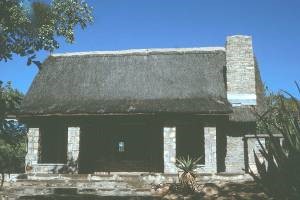
A small, picturesque thatched hall is available for weddings, lectures and other functions.
Various braai stands have been built around the area.
Spirit of Place Statement for Mabukuwene
Stand just a few kilometres south of Bulawayo City centre and soak up the atmosphere and imagine the area as it was over 100 years ago, with ox wagons and their teams of oxen outspanned in the dry red dust and now final resting place of some of the country’s earliest settlers. What a rugged life they must have led, in the early days of this great country; travelling north to discover more, crossing rivers, valleys, hills and rocky outcrops in their quest for adventure and a yearning to finally settle in this bountiful land. Stand still awhile and cast your thoughts back in time and remember all the brave souls who adventured forth into unknown territory to found this great nation.
Mabukuwene is a lovely place, restful and secluded where a person can sit in the sun, relax and think and enjoy 12 hectares of indigenous trees and plants set in an unspoilt area of kopjes with their distinctive pink hue. Stand on an outcrop and admire the view from 1442 meters (4730 feet) above sea level that affords a 360 º view point of the area.
When Thomas Meikle died in 1939 he was buried in a gentle sloping granite outcrop under the spreading arm of a giant wild fig tree. The arms of the fig tree throw a chequered pattern of sunlight and shadow on the granite. Members of his family joined him in later years. Other kopjies and ranks of bushveld trees ring the area and immediately around there is a paddock of golden grass.
Explore the two small areas of gardens, a plantation of jacaranda trees along an originally proposed drive-way, short lengths of dry-stone walling previously dividing the property into paddocks, a roofless ruined house (the barn) and a circular, stone-walled thatched-roofed lookout on the highest rocks. One of the small garden areas is the site of the grave and the other surrounds the house and lookout point in the centre of the property.
Discover some 80 different species of indigenous trees including some exceptionally fine specimens of Ficus ficus sonderi and EuphorbIa ingens. When in flower they attract a wide variety of birds typical of the habitat, nearly 100 species have been recorded such as Natal Francolin, Guinea Fowl and Spotted Eagle Owls. Look out for small mammals such as squirrels and dassies scampering around in the bush.
And so the wilderness called Mabukuwene continues, emphasizing the preservation of the indigenous flora and fauna and cultural heritage of the area.
Activities on offer at Mabukuwene
Walking, picnicking and enjoying the flora and fauna.
Directions to Mabukuwene:
Proceed south along Robert Mugabe Way which becomes Hillside Road, pass through Bradfield and Hillside, and look out for Inverleith Drive into which you turn right to reach the entrance to Mabukuwene in Burnside about 5 km from the City Centre.
GPS Reading
20° 12’ 41.79” S
28° 35’ 47.66” E
Operating Hours:
Mabukuwene is open to the public every day except Tuesday.
End of Year Report on Mabukwene: 2017-March 2018
This property has suffered from a long period of neglect, due to an absence of NTZ members in Bulawayo
and the lack of funding. However, thanks to significant funding from The Thomas Meikle Trust, help from
Dave Mason and with leadership from Busani Bafana (to all of whom we are extremely grateful), with a
small team, they commenced the extensive cleanup of this site, starting with firebreaks around the whole
circumference and then internally clearing the Lantana and other invasive plants. That cleanup project is now
nearing completion.
The lime green is Lantana which is smothering the indigenous vegetation Piles of cut Lantana
Controlled burn Post burn
We continue to liaise with The Thomas Meikle Trust on the future possibilities at this property. A draft concept
paper was prepared sometime ago outlining a vision to develop a small cultural and heritage education
facility. We are starting to convert that concept paper into a long term development and management plan
for the site.
Funding will be needed for this development and operational funding until it is self sustaining. A membership
drive is needed in Bulawayo and a new Committee is to be formed in the near future to drive this project
forward.
Grave of Thomas Meikle Restored dry stone walls
End of Year Report on Mabukwene: 2016
Below is an overview of the problems at the property and the adjacent property owned by the Meikles Trust, progress made and plans for the future for the sustainable management of Mabukuwene.
Problems:
- Rubbish is being dumped at the site and in addition to this there is uncontrolled litter;
- There are large areas of invasive plants including Lantana camara and Prickly Pear;
- The old internal stone and clay walls built by Tom Meikle require some repairs. One section collapsed earlier in the year after a 25mm rainstorm;
- The main entrance wall (stone and cement) is seriously leaning (on the Meikles section) and other stone walls are leaning over (NTZ section). The stone walls need to be underpined on either side of the main entrance, especially the northern side. This is tilting at a serious angle and the makeshift use of gum poles will not be a lasting solution;
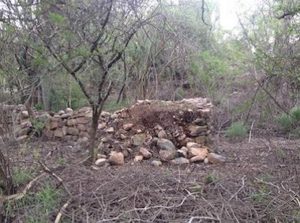
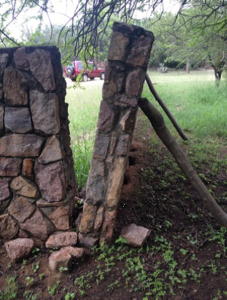
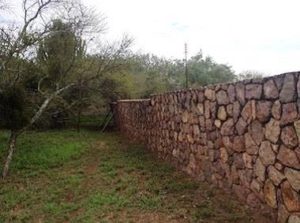
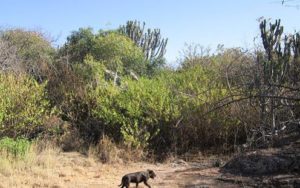 Collapsed earth and stone walls and Leaning front wall The lime-green bushes are Lantana smothering the indigenous vegetation
Collapsed earth and stone walls and Leaning front wall The lime-green bushes are Lantana smothering the indigenous vegetation
Work carried out:
- The colonising of the gate and increased work on the site greatly improved the property and community relations no end. Many thanks to Mrs Hugill of Meikles Trust for arranging this;
- Much of the litter in the Meikles section was been picked up and the dump next to path has been covered. Thanks to Mr Mason of Meikles for taking this up with their employees;
- Work on clearing the Lantana was undertaken and it opened a sizeable area but left masses of cut vegetation;
- Burning of the cut vegetation was stopped when it was so hot as there was the problem of run-away fires. This decision was agreed by the Bulawayo Fire Department. The areas that were burnt look good. Some trees a little scorched but a great improvement and they will recover.
- The good news is that the cochineal bug is taking out the prickly pear through natural destruction.
Other work required:
In addition to the general clearing of the site, going forward, it will also be necessary to:
- Restore the bird baths and the stone benches that are scattered around the Property;
- Restore the property map;
- Display the plant and tree lists that was once near the entrance;
- Identify and map out any sites of archaeological and historical importance.
The former entrance sign in 2004 The entrance sign in 2011, the metal board is now missing
The Way Forward:
This year the focus has largely been on the clearing and restoration of the natural conditions of Mabukuwene but the future of the property have to be addressed. As the NTZ does not have an income from this particular property and no accumulated funds there was a need to design a joint management plan and project proposal. Here are some excerpts from the proposal that was very kindly compiled by Mr Rob Burrett about developing a heritage centre at Mabukuwene for Bulawayo schools.
A concept paper was compiled entitled ‘Mabukuwene Cultural Village’.
Executive Summary
Mabukuwene lies in southern Bulawayo bounded by the suburbs of Hillside and Burnside. It is an area of great natural beauty as well as important historical associations. Owned by the NTZ since 1979 when it was donated to the Trust by the Thomas Meikle Trust it has sadly been neglected over the last 15 years and has become a place of crime and unacceptable behaviour by members of the public. There has also been a very serious invasion by Lantana camara which has developed into a veritable forest to the exclusion of the natural species and limiting access to large parts of the property or any possibility of considering any further development and maintenance of the property.
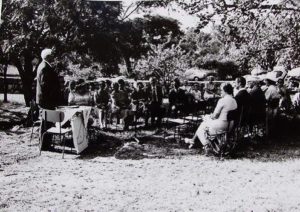
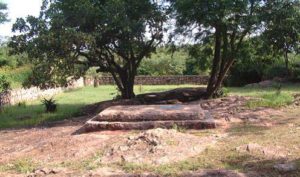
The official handing over of Mabukuwene to the NT in 1979 The grave of Thomas Meikle
Ministry of Education Culture Directives
The Zimbabwe Ministry of Education requires that all pupils are exposed to their traditional heritage and a directive requires all schools to construct an authentic “culture house” on the school property. We understand that this requirement is generally not met by most schools. While the concept and its operations have not been fully clarified, we believe that this education requirement creates an ideal opportunity for the NTZ to develop a general small “Cultural Village” facility on Mabukuwene to allow schools to comply to Ministry requirements. By having a single centre, the life-ways of several different indigenous communities of Matabeleland can be presented. In this way we are achieving possibly more than the Ministry may have intended. It is also a cost effective means of a large number of local schools being able to comply with the Ministry requirements. The centre will be built not only with a focus on schools, but to appeal also to general visitors and tourists.
The concept note suggests a way forward that will allow the NTZ to reclaim this property as a place of natural and cultural interest, as well as steps to re-engage other stakeholders such as the Meikles family as well as local residents and the general public. The project requires an initial input of funds then once the future operations are operational they will ensure financial independence and sustainability of this NTZ property.
The Cultural Village
The “cultural village” will consist of five enclosures, each of which will create a typical homestead of the indigenous people of Matabeleland:
- the San people;
- the Kalanga ( a section of the Shona community);
- the traditional Ndebele homestead consisting of thatched beehive structures combined with the modern Ndebele homestead of clay and thatch;
- the Nambya;
- the Tonga.
Each of these units will include typical houses, kitchen area and auxiliary structures such as grain bins/baskets. It is also proposed that simple furnace structure be built to show the technology used. Construction will use authentic materials – grass, clay and poles with cement added to the dhaka mixture to extend the lifespan of the structures. Some modern material will be used such as nails and twine.
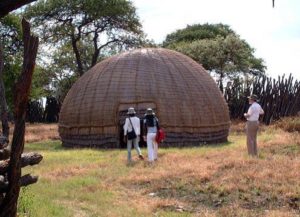
Typical Ndebele homestead building in its original form from koBulawayo.
Going forward, we truly hope that we will have the resources and secured the funds to translate the concept paper into a reality.
Annual Report on Mabukwene: 2015
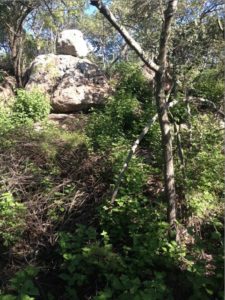
This property has suffered over the years from a lack of attention, due to there being a minimal number of NTZ members living in Bulawayo and the lack of funding. However, thanks to Mr Rob Burrett, with a small team, he commenced the extensive clean up of the site that had become over grown with invasive weeds such as Lantana camara.
Mr Burrett also prepared a concept paper outlining a vision to develop a small cultural/educational facility on the site. Funding is now being sought for this facility which will greatly enhance the education of the Bulawayo school children as well as from the surrounding area.
- Spider Hunt at Mabukuwene Nature ReserveThe Spider Club of Zimbabwe meet up for an outing into Mabukuwene Nature Reserve on 12th February at 8am before the temperatures started to rise. It was a clear summers day and a small group of enthusiastic kids with their parents came along. One mother was totally terrified of the bush and anything with more ...
- Mubukuwne – Spirit of Place StatementStand just a few kilometres south of Bulawayo City centre and soak up the atmosphere and imagine the area as it was over 100 years ago, with ox wagons and their teams of oxen outspanned in the dry red dust and now final resting place of some of the country’s earliest settlers. What a rugged ...
- MABUKUWENE Update August 2016Clearing of the invasive weed, LANTANA, is now underway and with the help of Rob Burrett and Mrs Hugill in Bulawayo we will be able to continue work on this historical property in order to attract more visitors for walks and picnics, birding outings. Plans are also proposed to have a cultural village exhibition at ...




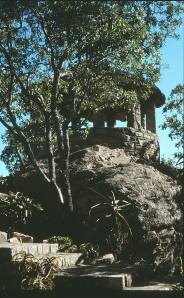
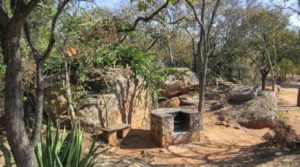

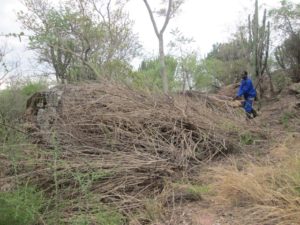
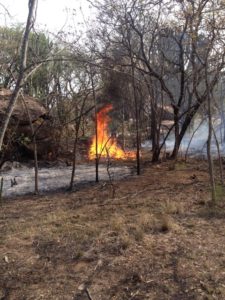
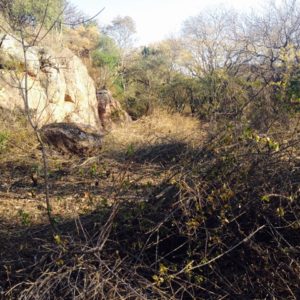
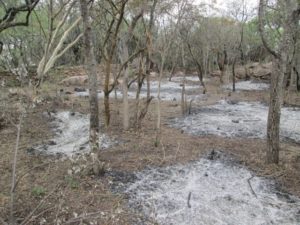
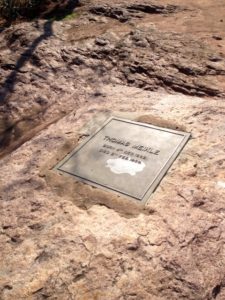
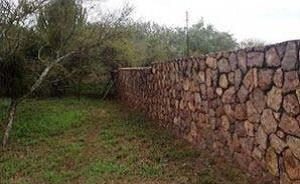
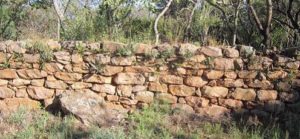
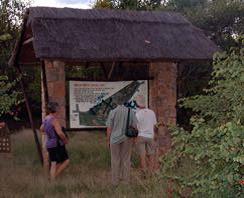
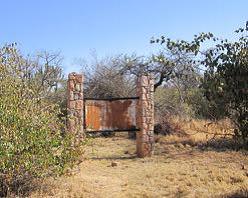


 USE NUMBER: 0775 907 595
USE NUMBER: 0775 907 595